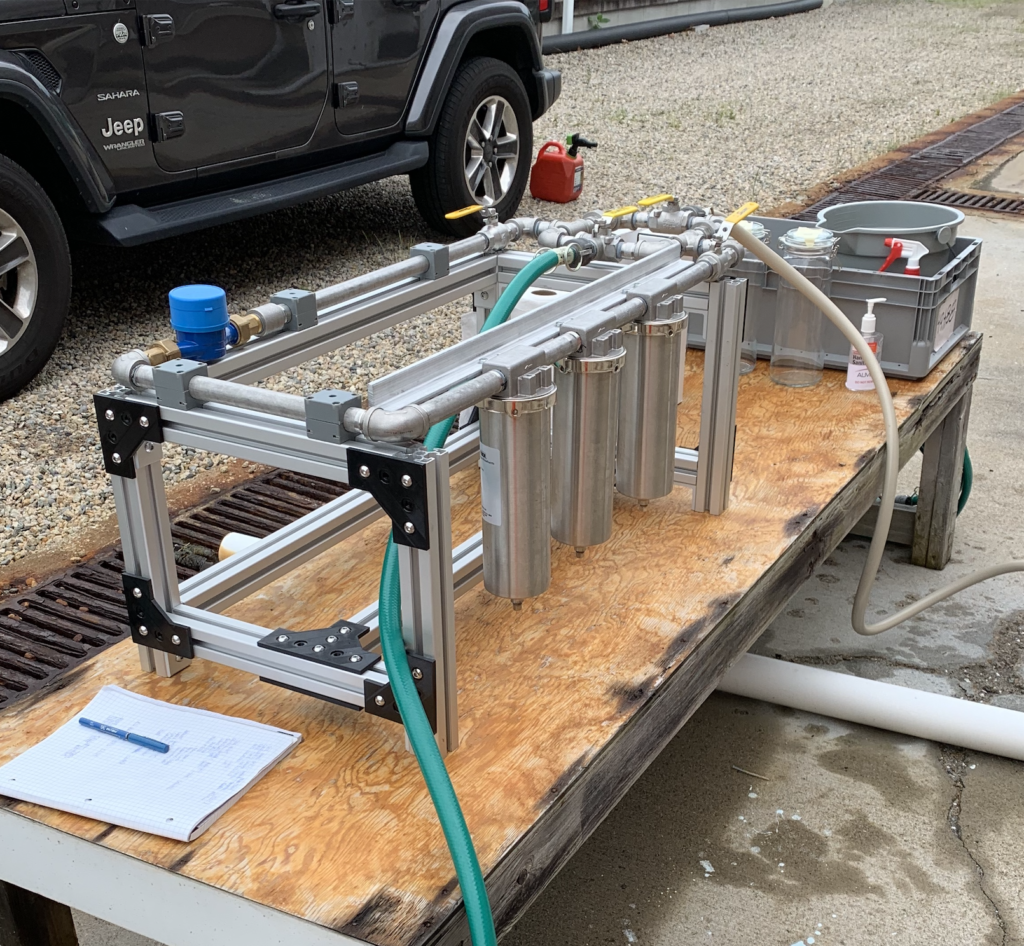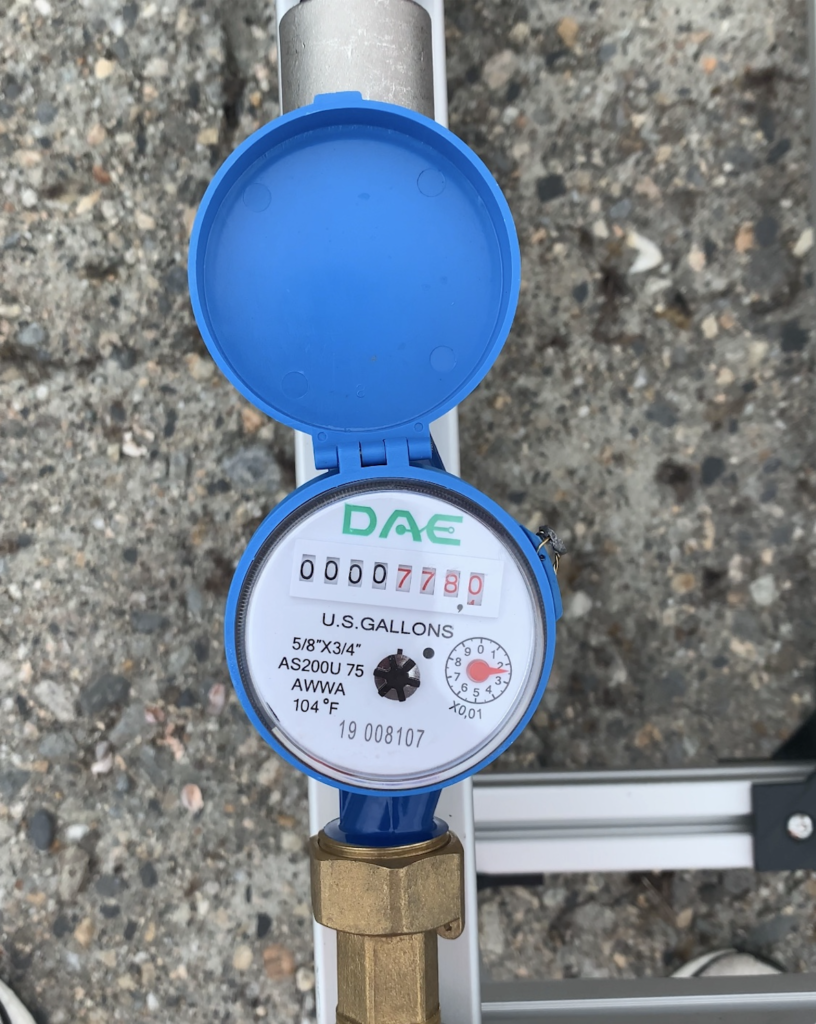Written by OSIMAP Coastal Fellows – Cara Megill and Jacqui Roush, undergraduate students at The University of Rhode Island

As Coastal Fellows assigned to the OSIMAP project, we are currently in the process of developing and refining our field sampling system and techniques that will allow us to sample at different locations around the Narragansett Bay. Our field sampling system consists of a stainless steel pump-filter apparatus that is able to pump large amounts of water through the filters in order to extract microplastics from each pumped sample via three small aperture sieves.
We have been testing the efficiency of the system by measuring the flow rates of our different pumps as well as determining the overall percent yield of the device. We have also faced challenges within our initial field collection trials and are still in the process of making changes to our system to ensure maximum productivity. Further updates have been made to the pump-filter system due to these obstacles found during our preliminary testing and protocols have been defined in order to comply with the restrictions placed on us by COVID-19. Through all of this, we were still able to develop a detailed sampling plan to move forward with our project.
Our field sampling trials began by ensuring that the system was able to execute its original design intention, to pump water both forward and backwards through the filtration system. Once this was established, our trials shifted into measuring the flow rate, or the rate at which water is pumped through the system, of the two pumps that can be associated with the system (electronic sump pump and petroleum gas pump). Both pumps are able to move the water at steady rates; the gas pump pumping at a slightly faster rate than the sump pump. Within these initial flow rate trials, we were also testing the system to determine the standard amount of water we could pump through the system for each sample before the filters became clogged or the flow rate slowed down to a negligible rate. As the gas pump seems to be the more efficient option for the system, pumping both faster and longer, we have determined that it will be the main source used for our official rounds of experiments. Therefore, this pump allows us to pump around 55 gallons or roughly 208.2 liters of water through the system, making this our standard sampling amount since the flow slows down significantly at this point.

From these initial field tests, we have designed experiments meant to test the efficiency of our system. Beginning with our backflushing measures, we have performed trials to ensure that particles left on the filters are flushed off the surface in order to prevent contamination from previous trials. This also requires rethinking on how the samples move from the pump to the pump-filter system. We have redesigned the configuration of our system multiple times and are settling on a few final options that preserves the integrity of the microplastics samples and is ergonomic in application. As we are wrapping up the preliminary stages of our project, we are currently determining the percent yield of our sample collections. In these trials, we are using prepared samples of distilled water contaminated with a predetermined number of fibers, to calculate an accurate percent yield for our overall system.
Looking forward, we are scouting accessible locations from which to take our samples. We are looking for sites with minimal foot traffic and easy water access points in order to ensure ease in our sampling process while reducing any possible contamination. So far, we have put together a short list of sites that are evenly distanced along the western shore of Narragansett Bay. Before our field sampling begins, we are planning to visit these sites and put together field profiles in order to gain better perspectives on the areas.
